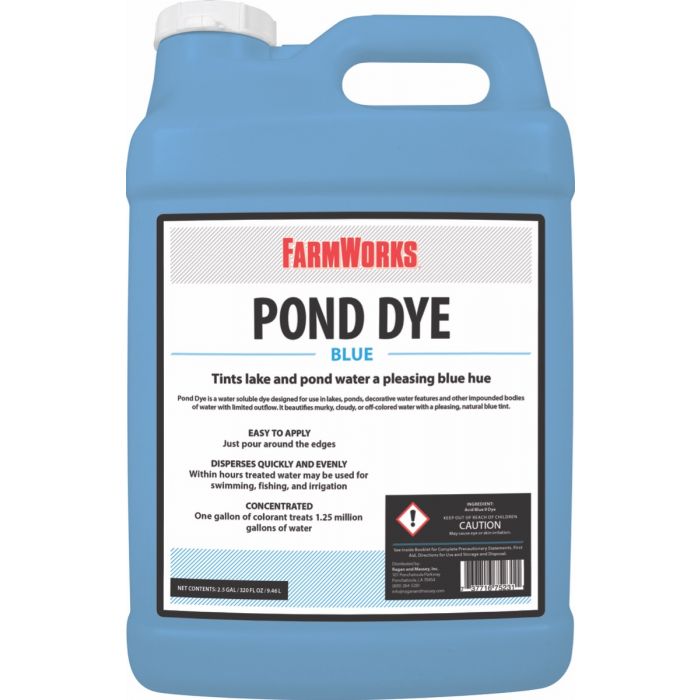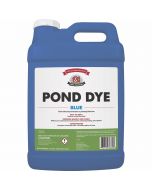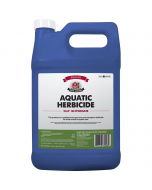Pond Dye
Available exclusively at Tractor Supply Co.
For once, being blue is a good thing
FarmWorks Pond Dye is a water-soluble pond colorant designed to beautify lakes, ponds, and decorative water features. Transform murky, cloudy, and off-color water within a few hours. Just pour around the edges–its pleasing blue hue disperses quickly and evenly. Treated water may be used for swimming, fishing, and irrigation within hours. For complete details, see the complete label.
Where to use:
Lakes, ponds, decorative water features, and other impounded bodies of water with limited outflow. DO NOT apply this product directly to drinking water. Chlorinated water will cause accelerated fading, requiring more frequent treatments or higher dosages.
When to use:
When water is murky, cloudy, or off-colored.
How to use:
- Proper dosage rate requires an accurate calculation of the water volume (acre-feet) in the treated area. To determine water volume, multiply the Length (ft) x Width (ft) x Average depth (ft) and then divide it by 43,560. This will give you the water volume in acre-feet.
For volume in acre-feet:
Length (ft) x Width(ft) x Average Depth (ft) / 43,560 - Use .25 gallons (.95 L) of this product for each acre-foot of water as determined by your calculations. See label for calculations and rate in meters.
- Pour from the container near the shoreline. Complete dispersion of this product should occur within hours after treatment, depending on the volume and movement of water treated.
- Additional amounts of this product can be added as needed to maintain desired coloration following rainfall, dilution, or water exchange.
- Allow several hours for this product to disperse before swimming, irrigation, or fishing.
- When used at the recommended dosage rate, treated water will not stain exposed surfaces or harm fish, waterfowl, pets, or wildlife.
Precautions:
- Allow several hours for this product to disperse before swimming, irrigation, or fishing.
- Do not apply this product directly to drinking water.
- When used at the recommended dosage rate, treated water will not stain exposed surfaces.
- When used at the recommended dosage rate, treated water will not harm fish, waterfowl, pets or wildlife.
- Chlorinated water will cause fading, requiring higher dosages or more frequent treatments.
Active Ingredients:
Acid Blue 9 Dye
Product Label:
Disclaimer:
It is a violation of Federal law to use this product in a manner inconsistent with its labeling. Read the entire label before each use. Use only according to label instructions.
See the complete label for specific use rates and detailed instructions.
Consult the Safety Data Sheet (SDS) for important safety information.



